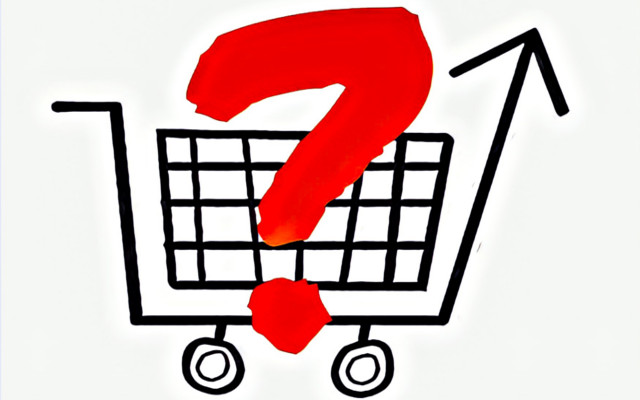The EU Regulation 1169/11, c.d. Food Information Regulation, has finally clarified the regime of responsibilities incumbent on the distributor. With regard to the consumer information on food products, as well as food safety more generally understood. Some insights to follow.
The guarantees of public health and protection of the economy now find further support in a group of mandatory legal regulations. Which-in the entire course of the agri-food supply chain, from farm to fork-define a mandatory regime of information that applies to every food supply activity, B2B and B2C, including the hypotheses of food administration and free services. (1)
The commercial buyer, the consumer and the patron (in the case of public catering) are put in a position to receive adequate information regarding the characteristics of the food offered to them, before making the relevant purchase and/or consumption choices.
Distributor liability, the criteria
Modern distribution – GDO, including one that operates through ecommerce – participates increasingly significantly in the value chain. Its role has consequently evolved, leading in several cases to the actual organization of the supply chain. With activities including selection of suppliers including intermediate suppliers, definition of specifications, development of products and accompanying information, imposition of quality management standards and schemes, audits and certifications.
The responsibility of the distributor is therefore extended across the board, including with regard to ensuring that it provides clear and substantiated information on the nature and characteristics of goods passing through the broad scope of business activities attributable to it. And any distributor-physical and online, wholesale and retail-is prohibited from supplying ‘food that they know or presume does not comply’ with applicable European and/or national standards. (2)
The criteria of diligence, prudence and expertise that the European legislator demands of modern distribution, it should be noted, is not that of ‘the good father of the family.’ Instead, having to expressly consider his role as a professional. A professional who-because of what was mentioned above, as well as data on organization and business volume-expresses the highest level of resources and knowledge today. On par with the giants of Big Food.
The ‘presumption of non-compliance’ that the modern retailer must keep under control therefore implies close vigilance in compliance with all horizontal and vertical regulations, European and national. (3) This entails the development, at the head of each distribution platform, of a system to prevent any possible irregularities on information about both IdM (Industry Brand) and MDD (Distributor Brand, or private label) products.
Distributor responsibility, prevention
Prevention must be implemented through appropriate procedures to achieve effective synergy between qualified expertise in the technical-scientific and food law fields. With the goal of ensuring that-beyond reasonable scientific and legal doubt-foods and the information accompanying them fully comply with current regulations. Without neglecting food fraud scenarios, which the distributor has the duty and responsibility to prevent. (4)
Risk analysis by the distributor, in other words, differs from that of the supervisory authorities precisely by virtue of its exquisitely preventive, rather than purely repressive, function. Because modern distribution must be precisely able to prevent the outlawed product from being placed on the market, before it is accepted into their warehouses. (5) It is therefore necessary to assess upstream-before the go-ahead for acceptance-whether the proposed information on each individual reference is complete, truthful (i.e., demonstrable), and transparent (i.e., clear and understandable, not misleading).
Adequate computer support – such as the Immagino system of GS-1 Italy (Indicod-Ecr) – is sure to help in managing and sharing the huge streams of data and images related to the hundreds of thousands of references managed by the large-scale retail trade. Regulatory developments, moreover, require a new focus on the most sensitive stage of the data loading process, which is precisely the validation of the legal compliance of labels.
The same logic should be applied to other categories of consumer products. Specifically to food contact materials (FCM) and to pet food. Information on how to use these products-in the broader realm of so-called. FMCG (Fast Moving Consumer Goods) – may in fact have peculiar impacts on human and animal health.
Dario Dongo and Pier Luigi Copparoni
Notes
(1) For further study, please refer to our free ebook ‘1169 penis. Reg. EU 1169/11, food news, controls and penalties‘
(2) See reg. EU 1169/11, Article 8.3
(3) Horizontal regulations are defined as those applied to the generality of products (ex. reg. EU 1169/11, Food Information Regulation; reg. EC 1924/06 et seq. on Nutrition & Health Claims). Vertical regulations, on the other hand, relate to individual product categories (e.g. reg. EU 2015/2283, Novel Foods; reg. EU 609/2013, foods for special medical purposes)
(4) It is worth pointing out the punishability under negligence of the crime of selling harmful food substances (Article 452 Penal Code), as well as the misdemeanor crime under Law 283/1962, Article 5. Useful guidance on procedures to be adopted is available at FSSC 22000 guidance document on food fraud mitigation.
(5) In fact, it is recalled that the punishability of some crimes and administrative offenses is brought forward to the stage of ‘holding for sale’









